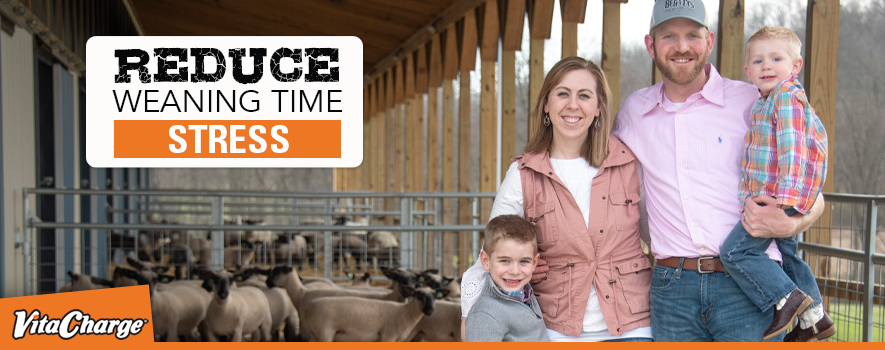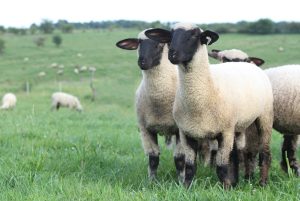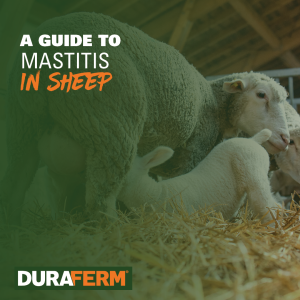
There’s no doubt, weaning is a stressful time for any species. However, it is a necessary part of the life cycle. With proper planning and preparation weaning can be less stressful for both the mom and her offspring, while ensuring that both groups stay healthy and performing.
Greg Beatty, owner of Beatty Club Lambs in Indiana, Pennsylvania, raises and markets club lamb prospects across the country each year. He will lamb just shy of 250 ewes this year and has a routine for weaning each group of lambs. His first priority when it comes to weaning is to make sure the lambs stay healthy, which means making sure they stay on feed and water.
“Make sure they are healthy to minimize stress at weaning time. It doesn’t matter how many precautions you take; one or two will have some type of problems. Offer them as many water sources as possible,” Beatty said.
Pre-weaning
Beatty said to make the weaning transition as smooth as possible, he starts when the lambs are about 6 weeks old, by changing the ewes’ diets so their udders will naturally start drying up. He starts by cutting alfalfa out of their diet, shifting them to a rougher hay like a first-cutting grass type hay. He starts decreasing their grain intake at week 6, and by the time the lambs are 7 weeks old, the ewes are off grain and only eating the dry hay.
While using diet to dry up the ewes, Beatty starts making sure his lambs are adapting to their new grain and water diet. Although many sheep producers have self-waterers, he also suggests putting buckets of water out for lambs, perhaps in a creep area so they also adjust to drinking from the bucket; he likes to give them clean, fresh water at least two to three times a day. Unlike some producers who might opt for a free-choice creep feeder system, Beatty prefers to hand-feed his lambs twice a day so they always have fresh feed, and it allows him to monitor their eating progress and their health.
“The biggest thing we do when we creep feed lambs is making sure they clean up their feed. We feed them and make sure they clean it up twice a day, so we know the lambs are mentally ready for it. An easy way to tell if they aren’t feeling well is if they are the last one to the feeder or the first one out,” Beatty said.
Weaning
By the time the lambs are about 8 weeks or 2 months old, they are ready to be weaned. By now, the mommas’ udders should be drying up, and lambs should be adjusting to their new diets. When the lambs are removed from their mothers, Beatty initially offers the fresh-weaned lambs a lot of hay to keep their rumens working and to keep them healthy. He feeds them grain they can clean up in 30 minutes, usually about 1.5 pounds for the first four to five days with the goal of getting them on two pounds per day.
Weaning is a stressful time and inevitably there will be one or two lambs who go off feed and water. When that happens, Beatty has found that using Vita Charge® products like Vita Charge Liquid Boost® and Vita Charge Gel help his lambs recover and get them back on feed and water. He is a firm believer in the Liquid Boost and had a few lambs that weaned earlier this year that wouldn’t drink, and therefore didn’t have an appetite. He administered them the Liquid Boost, and that was a game-changer.
“When we see signs of stress or sickness, we give them Liquid Boost to get their gut and rumen working better. I had two lambs that struggled earlier this year after weaning. They would come up and drink their Liquid Boost out of the drench gun. They like it; it has a good flavor,” he said.
Just because the lambs are weaned, doesn’t mean the ewes should be forgotten. Beatty said it is imperative to make sure they are dried up when the lambs are pulled off of them and continue to do udder checks to make sure they stay healthy and to help prevent mastitis. He recommends bedding them on dry straw instead of sawdust since bacteria can live in the sawdust. If mastitis does occur, treat it clinically at the earliest signs.
Another alternative that Beatty said some people prefer is day weaning. He explains that the ewes and lambs will be separated during the day, but the lambs will be allowed to be with the ewes one final time for about an hour to suck down the ewes just before they are weaned and pulled away permanently. Although Beatty has used this method, he hasn’t found an advantage to it. He said the most important thing is to get the ewes dried up properly.
Post-weaning
Once the ewes and lambs are finally separated, keeping both groups healthy and eating is the most important task. Be sure to check the ewes’ udders daily for any signs of mastitis and make sure they are eating and drinking. The lambs should show signs of vigor, getting up to eat without choking and drinking plenty of clean fresh water.
Weaning is a stressful time. Anytime you change a routine, remove a nutrition source and change a diet, you are going to experience stress. Mitigate that stress in your sheep barn with the help of Vita Charge and help your lambs recover quickly.

